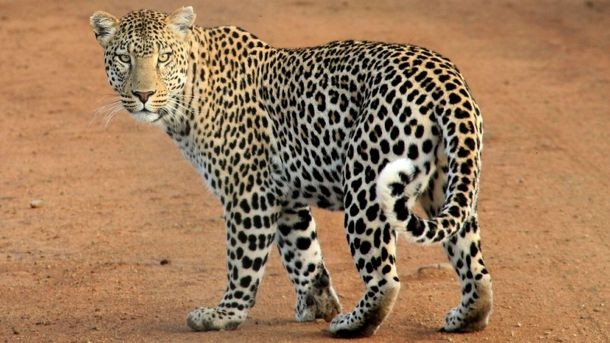Leopards, scientifically known as Panthera pardus, are among the most adaptable and widely distributed of the big cat species. These magnificent creatures are renowned for their striking spotted coats and incredible agility, but Where Do Leopards Live? Understanding their habitat and geographical range reveals a fascinating story of survival and adaptation across diverse environments.
Diverse Habitats of Leopards
Leopards are incredibly versatile in their habitat preferences, contributing to their extensive global distribution. Unlike some big cats that are restricted to specific environments, leopards thrive in a remarkable variety of landscapes. Their habitat range includes:
African Habitats
In Africa, leopards are found in a wide array of ecosystems. They inhabit savannas and grasslands, where their spotted coats provide excellent camouflage amongst the tall grasses and acacia trees. These habitats offer diverse prey, from antelopes to smaller mammals, supporting leopard populations. Leopards also live in forests across the continent, adapting to both dense rainforests and drier woodland areas. Even rocky and mountainous regions are home to leopards, showcasing their climbing prowess and ability to navigate challenging terrains.
Asian Habitats
Leopards in Asia demonstrate equally impressive habitat adaptability. They are found in the rainforests of Southeast Asia, sometimes exhibiting melanism, a genetic variation leading to black coats that offer better camouflage in the dim forest understory. Temperate forests across parts of Asia also support leopard populations. Remarkably, leopards can even survive in deserts and rocky regions of the Middle East and parts of Asia, showcasing their resilience in harsh conditions.
Adaptability to Varied Environments
What truly sets leopards apart is their ability to inhabit both extremely dry and very wet environments. They are unique among big cats for living in both desert and rainforest habitats. This adaptability is crucial to their survival and widespread distribution, allowing them to occupy niches unavailable to more specialized predators.
 Leopard in a tree, camouflaged against the branches, with dappled sunlight
Leopard in a tree, camouflaged against the branches, with dappled sunlight
Geographical Range of Leopards
The geographical range of the leopard is the most extensive of all big cats, spanning across continents and a multitude of countries. This vast distribution highlights their adaptability and success as a species.
Africa
Leopards are widely distributed throughout Africa, particularly in sub-Saharan regions. From West Africa to Southern Africa, and East Africa to parts of North Africa, leopards can be found in numerous countries. Their presence across such a broad swathe of the continent underscores their ability to thrive in diverse African ecosystems.
Asia
In Asia, the leopard’s range is more fragmented but still significant. They are found in parts of the Middle East, including areas of the Arabian Peninsula. The Indian subcontinent is a crucial stronghold for leopards, with populations in India, and surrounding countries. Their range extends into China, and even as far north as eastern Russia, although populations in these northern regions are often more endangered and fragmented.
Factors Influencing Leopard Habitat Choice
Several factors determine where leopards choose to live. Prey availability is paramount; leopards need access to a sufficient food supply, which varies across different habitats. Their diet is incredibly diverse, ranging from large ungulates to smaller mammals, birds, reptiles, and even fish, allowing them to exploit various food sources in different environments. Climate also plays a role, with leopards adapting to both warm and cold climates, although extreme temperature variations can impact prey availability and habitat suitability. Finally, competition from other predators can influence leopard distribution. While leopards are apex predators in many ecosystems, they face competition from lions, tigers, hyenas, and wild dogs, which can affect their habitat use and prey selection.
Conclusion
In conclusion, leopards live in a remarkably wide variety of habitats across Africa and Asia, from savannas and rainforests to deserts and mountains. Their exceptional adaptability and diverse diet allow them to occupy a broader geographical range than any other big cat. Understanding where leopards live is crucial for effective conservation efforts, as it highlights the need to protect a multitude of ecosystems to ensure the survival of these magnificent and adaptable creatures.

